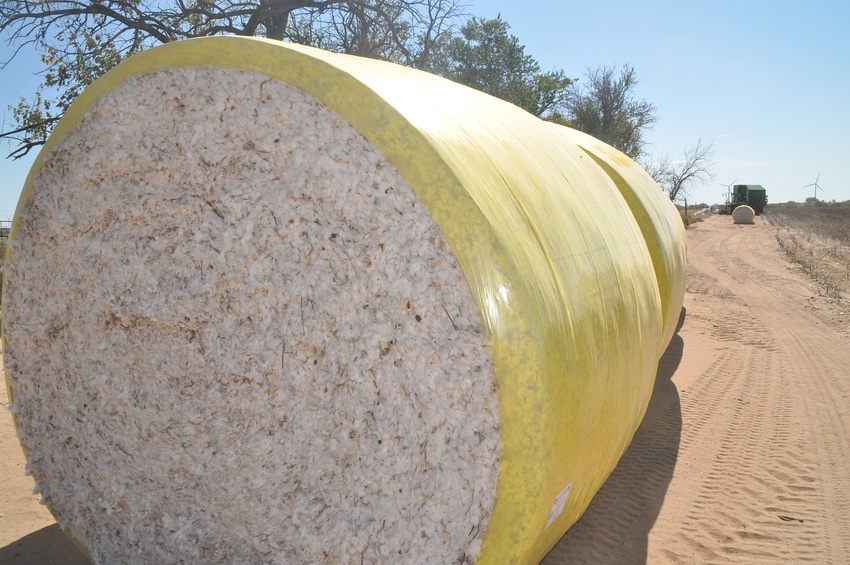
Cotton harvest has a brand new look in some places this year.
"We have three of the new John Deere baler/strippers in our area this year," says Rex Friesen, agronomist with the Southern Kansas Cotton Growers. "This is a piece of machinery that stands to make a big difference for cotton growers.”
Baler/strippers build a big round bale of cotton as the field is harvested and are capable of carrying one bale while building a second, allowing the operator to carry the bales to the end of the field, where they all can be picked up easily for transport to the gin.
"The operator doesn't have to stop for anything. The machines are designed to run all day without refueling or adding plastic wrap," Friesen said. "Because you aren't having to dump into a boll buggy or build the modules in the field, you won't have to stop because it's windy. The baler/stripper can keep going in the wind."
For the latest on southwest agriculture, please check out Southwest Farm Press Daily and receive the latest news right to your inbox.
Friesen said baler/pickers have been around for some time but Deere only recently introduced the baler/stripper. This is the first year it has been available for commercial use and Barber County farmer and custom harvester Steve Keimeg was quick to order two of the big machines.
"I had three strippers with boll buggies and module builders and tractors and I traded them all for these two machines," Keimeg said. "I operate one and my son drives the other."
A big advantage of the baler/stripper is that it requires only one operator. Everything else -- stripping, module building, wrapping and dropping at the end of the field -- are automated.
"The labor savings are a big deal," Keimeg said. "You just can't find help. With these machines, two operators can harvest a circle in a day."
Freisen said this year's Kansas cotton crop will rival last year's for yield. On Oct, 20, Keimeg said he was averaging between 1.5 and 2 bales per acre.
Gining challenge
The big round modules coming off the new machines are a ginning challenge because Kansas gins were built for the big rectangular modules. Round bales have to be handled differently and some modifications made to the feeder to keep them from spilling over the sides as the plastic wrap is removed.
So far, only the gin at Anthony is equipped to handle the round bales because the growers who have the baler/strippers are in that area.
"As we get a higher volume of round bales to handle, we'll probably have to reconfigure the gins," he said.
Friesen said even though cotton acres are down significantly this year, he is optimistic for the future.
One big development that may help cotton gain acres is the arrival of the new 2, 4-D resistant varieties coming from Phytogen in 2017.
"We've had a lot of growers back away from cotton because it is so susceptible to 2, 4-D damage," he said. "That is especially true in the southwestern part of the state, which could really benefit from shifting some corn acres to cotton to be able to have a competitively profitable crop with about half the water. But that area has seen some heavy damage to cotton just about every season from 2, 4-D drift."
New varieties resistant to Dicamba are also coming out and that will be good for helping fight glyphosate resistant pigweed, which is a growing problem widely described this year as "awful."
About the Author(s)
You May Also Like






